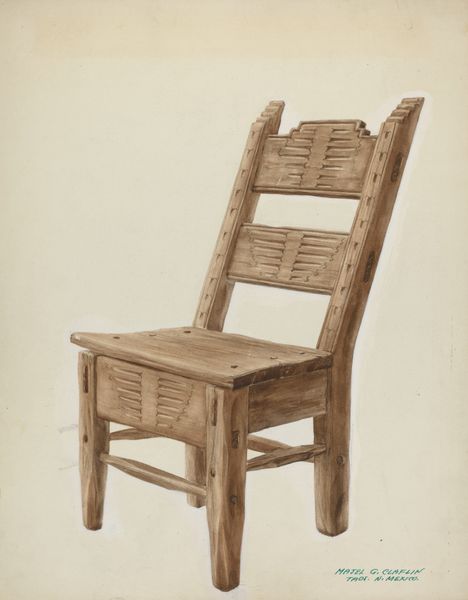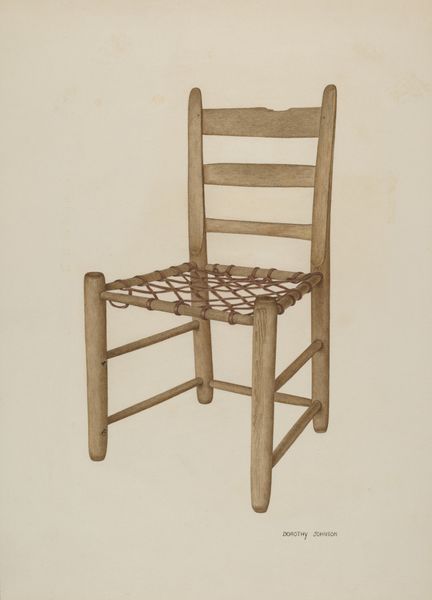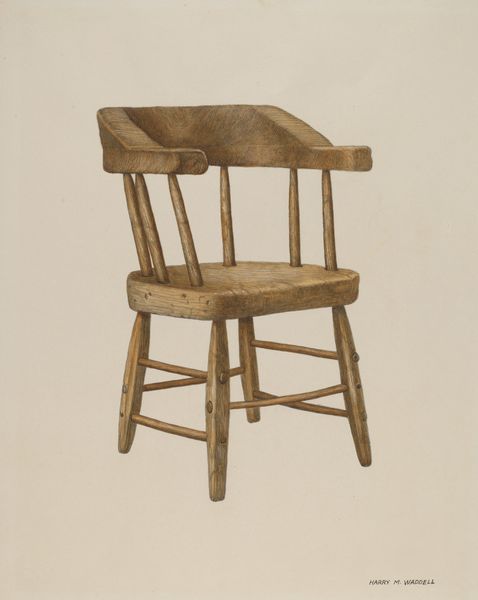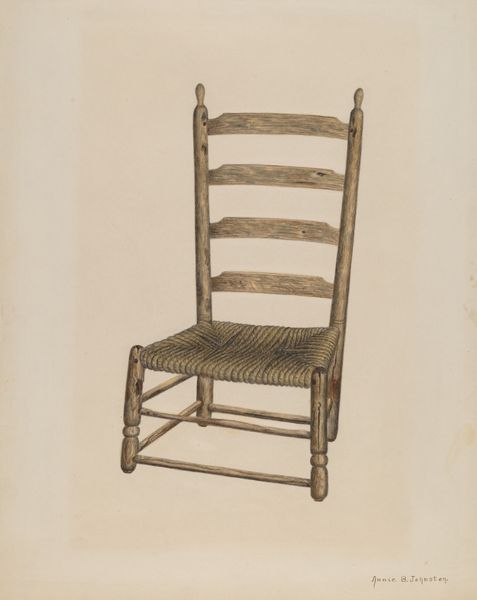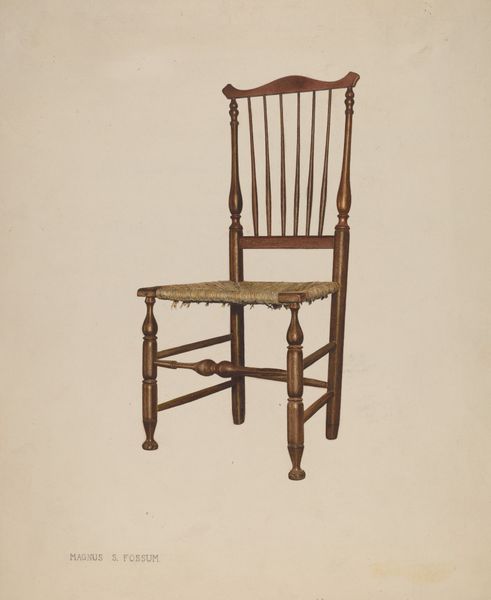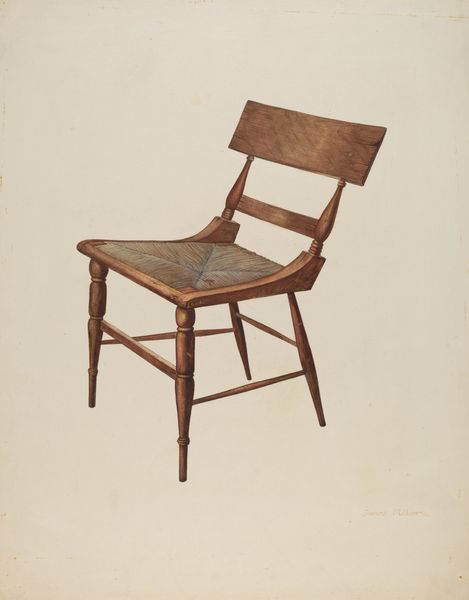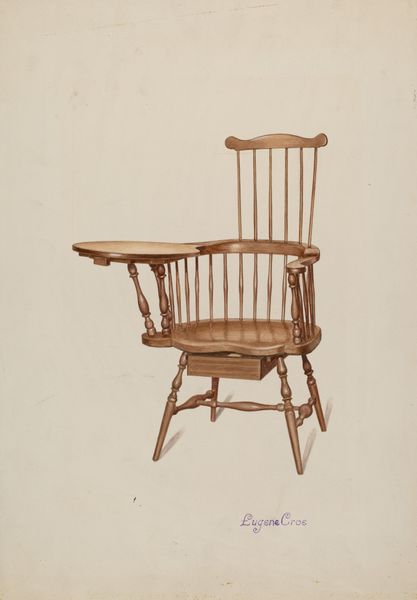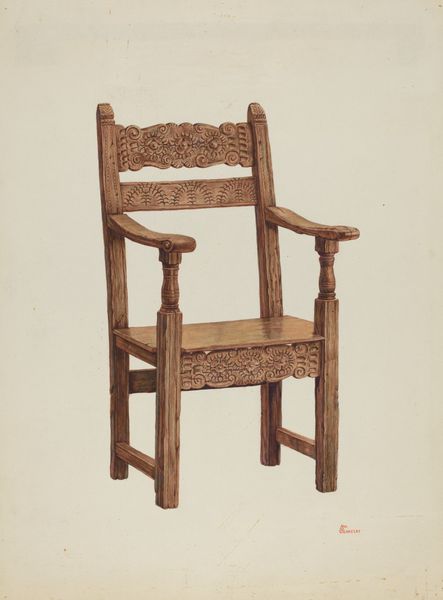
drawing, pencil
#
drawing
#
pencil
#
realism
Dimensions: overall: 31.7 x 23.6 cm (12 1/2 x 9 5/16 in.)
Copyright: National Gallery of Art: CC0 1.0
Curator: Welcome. Today, we're observing Margery Parish’s "Chair," a pencil drawing from around 1938. Editor: My initial impression is that it feels…stark. It’s a simple object, but the artist’s close rendering grants it a strange solemnity. The palette feels so restricted. Curator: Precisely! Parish’s work operates through line and tone. Notice how she captures the play of light and shadow on the wooden surface? The texture, almost palpable, reveals the materiality of the subject, bringing forth an appreciation for the humbleness of a chair. Editor: Yet, within that careful realism, I wonder: A chair is not just a chair. Whose body might have sat here? A weary worker? A marginalized homemaker? In the context of the late 1930s, during the Depression, such a mundane subject suggests the struggle of daily life for ordinary people. It resonates with themes of labor and resilience. Curator: A fair point. But structurally, this chair’s design is deceptively complex. See how Parish manipulates the vertical and horizontal planes, creating subtle tensions within the composition? She captures how our minds make order even when seeing such subtle variation of geometric form. Editor: That visual complexity might also mirror the era's anxieties. While seeming simple, it subtly alludes to the disruptions of a world on the brink of war, hinting at the insecurity and instability pervasive at that time. A solid, functional object made vulnerable. Curator: An interesting intersection of the formal and historical analysis! To your point about the instability of this period, there's such elegance in the detail. It shows how something familiar, domestic, is ultimately a rich field for artistry. Editor: Right! Through Parish's simple approach, an unpresuming object can remind us of overlooked realities. That careful choice transforms the way we view ordinary narratives of personhood, memory and being.
Comments
No comments
Be the first to comment and join the conversation on the ultimate creative platform.
